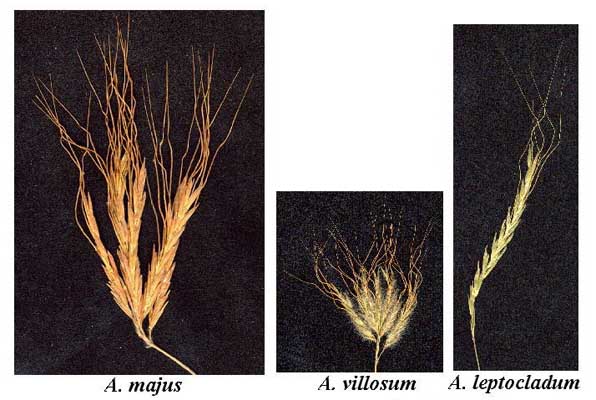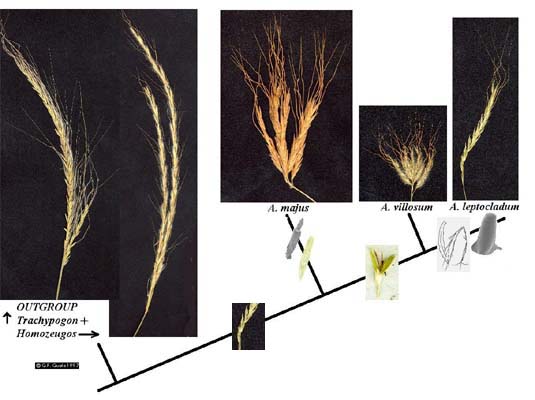
Page 2

CHARACTER STATE MATRIX
1 2 3 4 5 6 7
MAJUS 0 0 1 1 0 0 1
VILLOSUM 1 0 0 0 0 1 1
LEPTOCLADUM 1 1 0 0 1 0 1
OUTGROUP 0 0 0 0 0 0 0
1. Hermaphrodite flowers: large = 0, small =1
2. Prickles on the upper leaf surface: short = 0, long = 1
3. Cells of bicelluar microhairs: nearly equal = 0, very unequal =
1
4. Length of palea (an internal flower part): short = 0, very long
= 1
5. Growth habit: branching low = 0, branching only high = 1
6. Hair type on the female flowers: General andropogoneae type = 0,
AV type = 1
7. Hemaphrodite flower pairs at the base of the spikelet: absent =
0, present = 1
The logiacl process:
A. The biggest group that shares synapomorphies is made up of all three
species of Agenium (char 7).
B. Check for conflicts - there are none.
C. Designate these three species as a clade.
D. The next biggest group is LEPTOCLADUM+VILLOSUM (char 1)
E. Check for conflicts - there are none.
F. Designate these two species as a clade.
If this were a larger data set with more species and characters, you (or the computer) would rearrange the tree many times add up the number of 0 -> 1 steps. If it found another tree with fewer steps it would prefer that one. The goal is to get the shortest tree possible in terms of number of steps. If there are more than one of the same shortest length then you need to either choose among them for some ad hoc reason or combine them.

Fortunately, there are no conflicts in this tree. If there were conflicts or multiple possible answers then we would then use a consensus tree or use ad hoc hypotheses to choose among the options.